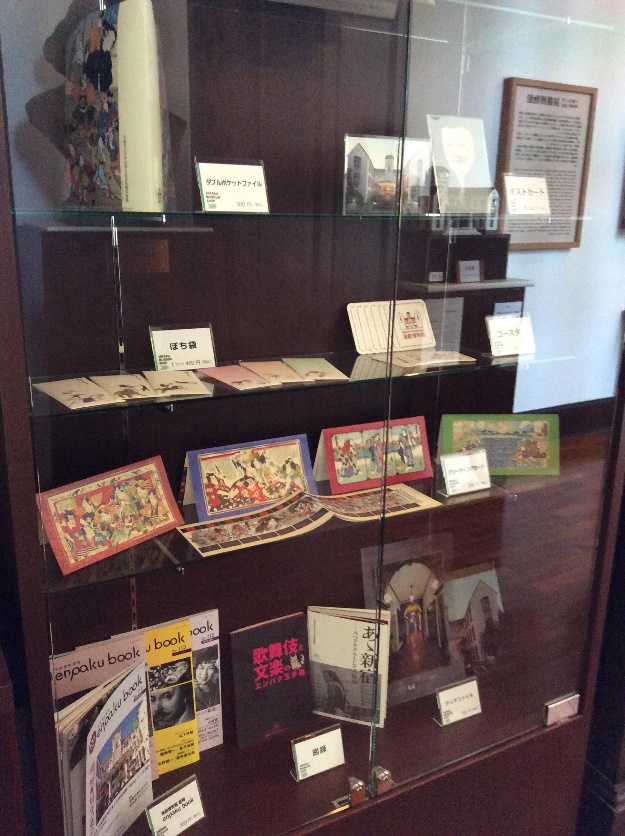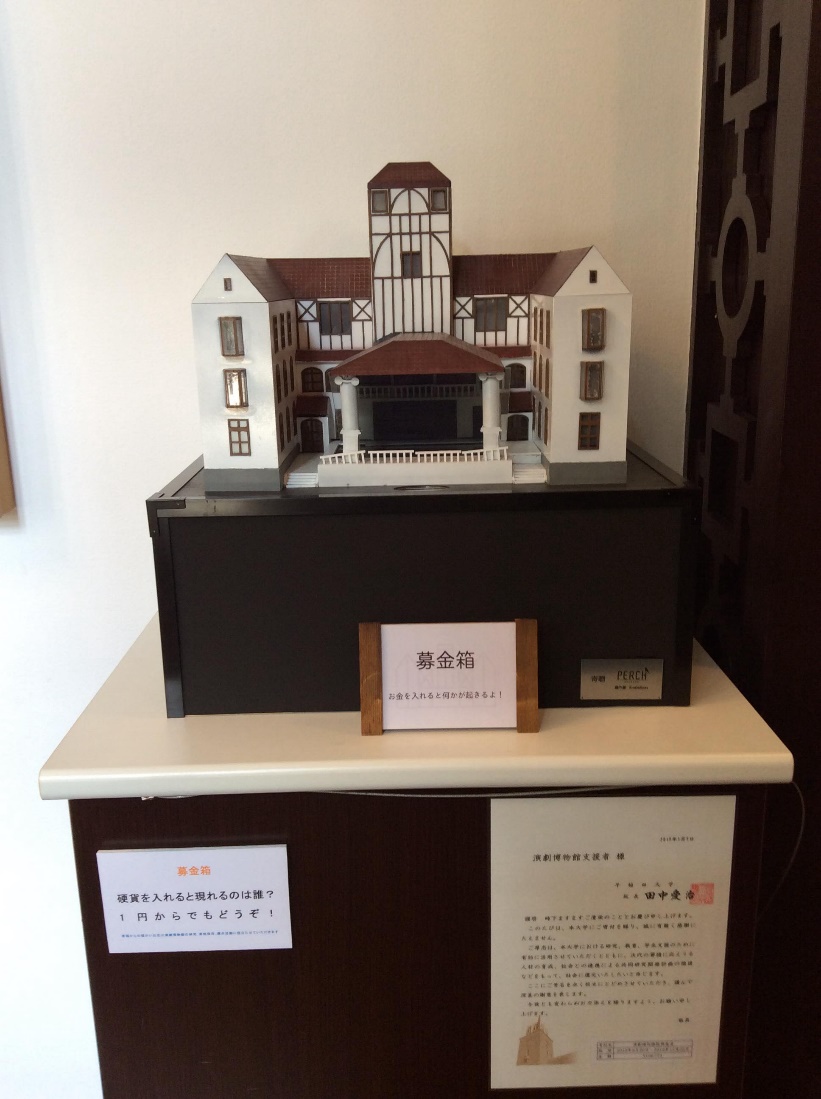The Lure of the Tsubouchi Memorial Theatre Museum – History and Precious Collection
Mon, Oct 7, 2019-
Tags
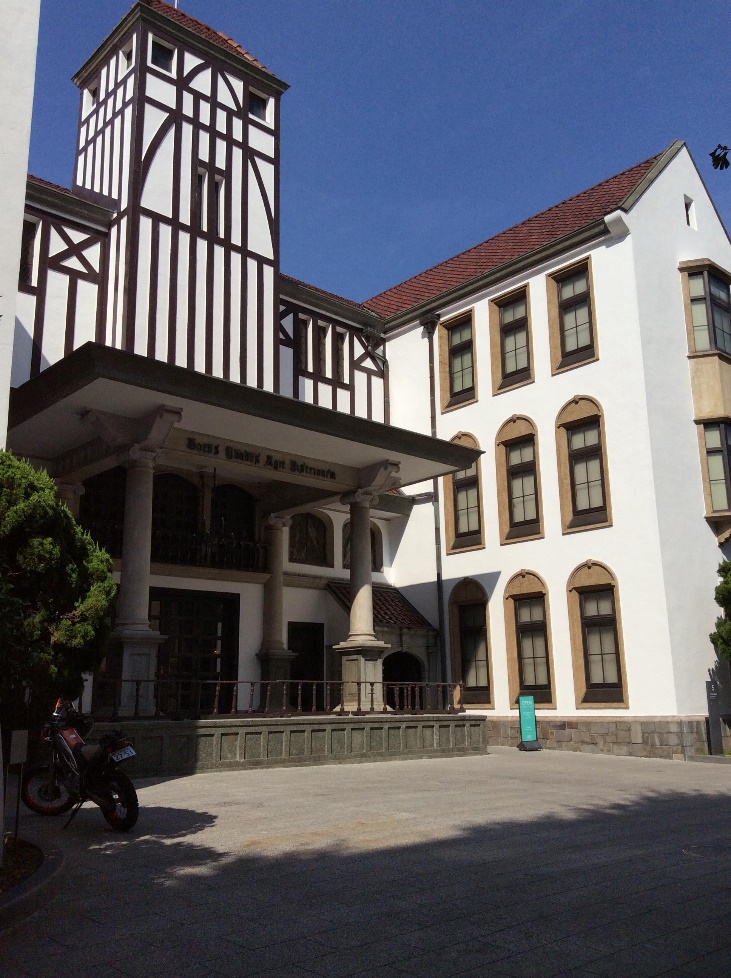
Tsubouchi Memorial Theatre Museum
The Tsubouchi Memorial Theater Museum is located on Waseda Campus and right next to the Building 6, which is the annex of the museum. If you walk by, you will be surprised by the beautiful Elizabethan building. In the museum, wide and great collection related to theater and play such as scripts, posters, woodblock prints, and dolls, puppets, and costumes used in Japanese traditional play are kept.
The museum was founded in 1928 to commemorate the 70th birthday of Tsubouchi Shoyo (1859-1935), who was a novelist and a professor specialized in literature at Waseda. He was also the first to translate the complete works of William Shakespeare into Japanese. This Elizabethan building was modeled on the Fortune Playhouse, which was built in the sixteenth century in Britain.
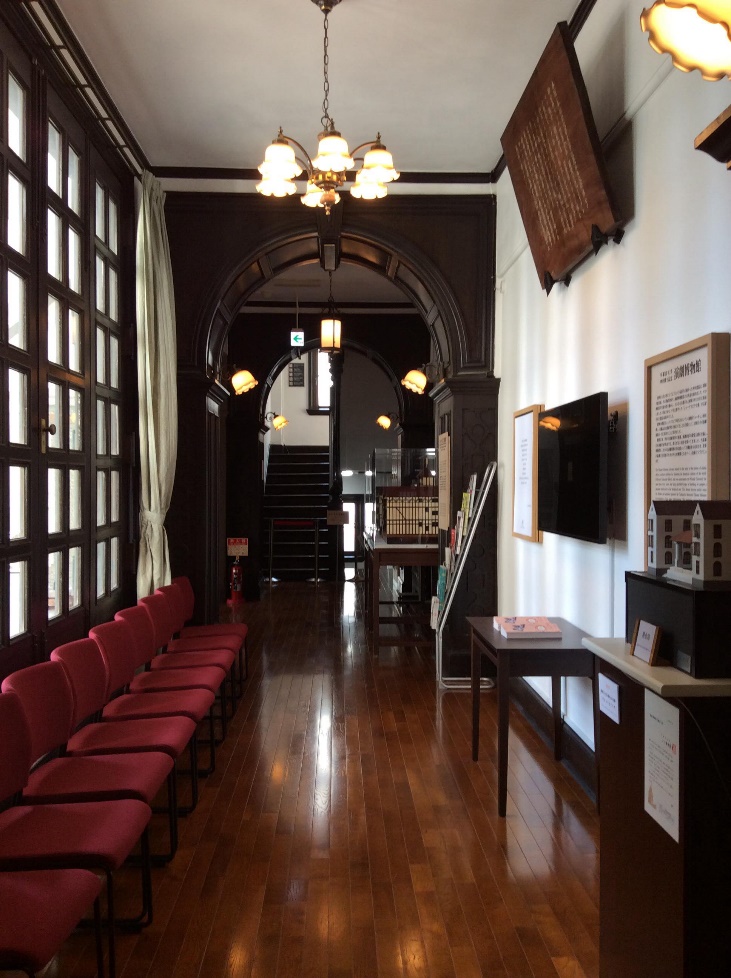
Corridor on the first floor of Theatre Museum
When you enter the museum, there is a library where you can read and borrow some books about theater, plays, and literature. Walking the corridor, there is a special exhibition room. Since it is an old building, the floor creaks loudly, so make sure to walk gently in the room. There are two special exhibition rooms on the second floor and permanent exhibition room on the third floor though it is closed due to the renovation and will open on November.
On the second floor, there is an Elizabethan style room used by Tsubouchi Syoyo. Since he was born in the year of sheep, the ceiling of the room is decorated with sheep and ornaments of sheep are placed in the bookshelves that Professor Tsubouchi used to keep English books to translate Shakespeare’s drama.
- Goods sold in the museum
- A donation box
You can also buy some original goods such as post cards, files, envelops, and books in the museum library.
Another interesting thing you can find in the museum is a donation box on the first floor. Each time you put some money into this museum-shaped box, something appears on the small screen. You should give it a try and check out what will appear!
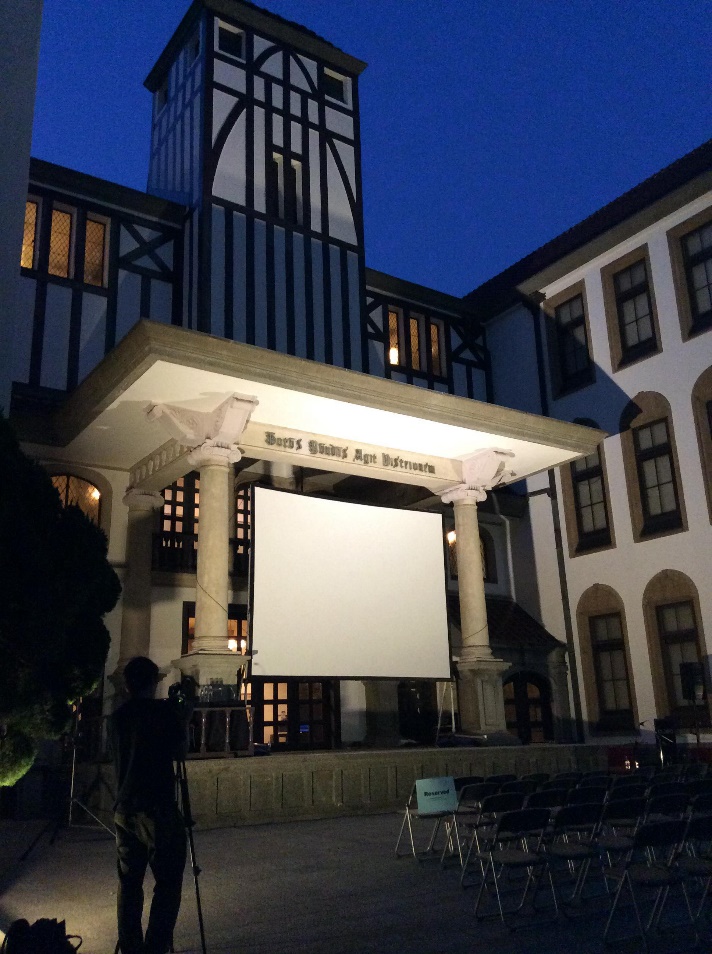
Screen placed in front of the Theater Museum
In addition, the museum holds events every month. The recent one was Enpaku Cinema 2019 held on October 1. Three silent movies were shown with live music and narration on the screen placed in front of The Museum. Since it started at 6pm, the campus was silent unlike usual and cool summer wind and the sound of rustling leaves made atmosphere special. The narration by benshi, Japanese professional performer providing narration to silent films, was very powerful and matched to the movie well. Since it was a silent movie and captions appeared on the screen, even those who speak no Japanese or have only started learning it can enjoy. Although you may be tired of sitting on uncomfortable chair for two hours, it is worth attending at least once. This silent movie showing is held once a year, so do not miss the next time.
In the collection, there are some prints and paintings of yokai, Japanese ghosts or monsters. One of the famous collections is Stage Curtain for the Shintomi Theater painted by Kawanabe Kyosai. This curtain was lent and exhibited in the Citi exhibition Manga at the British Museum from May 23 to August 26 in 2019. Since it is gigantic – 17 meters wide and 4 meters tall, it cannot be displayed in the museum and had rarely been shown to the public: the last time this great painting was lent out to the British Museum was 25 years ago. On this stage curtain for the Shintomi Theatre, Kabuki actors disguising themselves as yokai are depicted dynamically. It is said that he finished this painting while he was drinking rice wine, within four hours on the day he was asked to paint it.
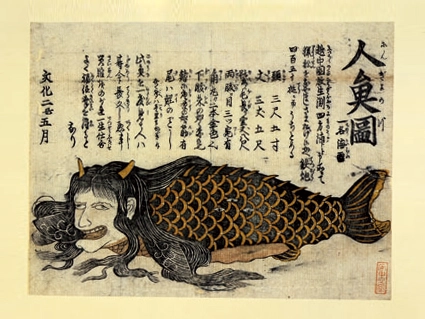
A Flier of a Mermaid (photo retrieved from Museum website)
Another example is A Flier of a Mermaid which depicts a dying creepy mermaid found in Etchu province (now Toyama prefecture). This is a wood block printed kawaraban, which was an unscheduled newspaper during the Edo era. The face of the mermaid is frightening and similar to yamanba, Japanese mountain witch, but its body is like a fish without a neck and covered with detailed scales.

It is sure that you can enjoy the museum itself, but there are many other collections you can look up on the online database. The online collections are classified into sections, such as, ukiyo-e, photos, scenarios, three-dimensional photos of the mask used for playing. Especially, the collection of ukiyo-e and nisiki-e, colored woodblock prints, is massive and around forty-seven thousand prints are kept since Shoyo was a great collector of them.
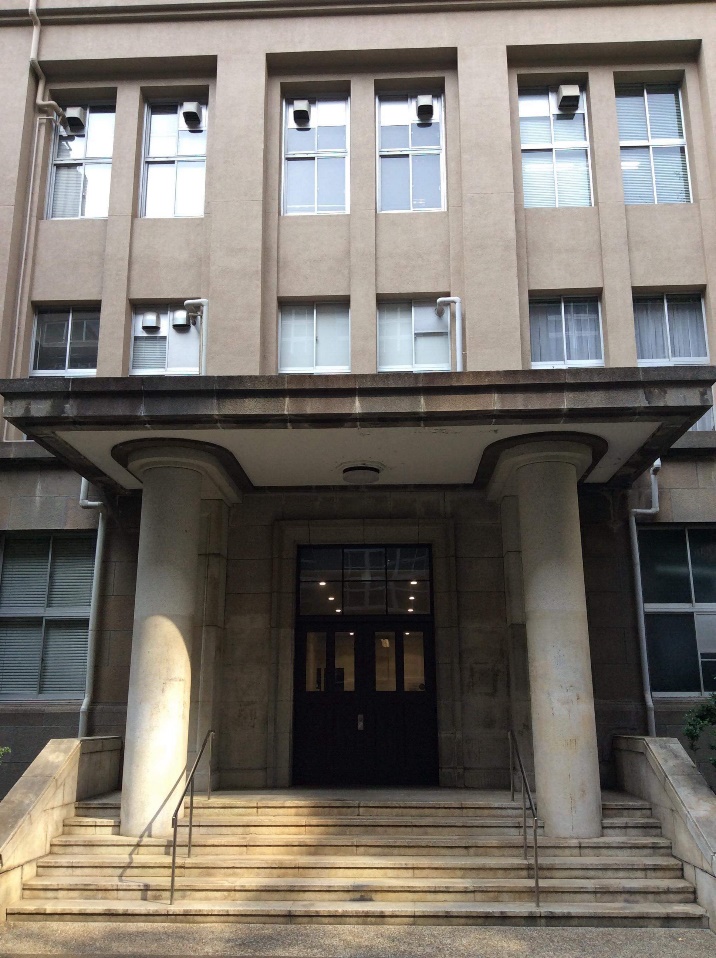
Photo of Building 6
Also, this museum is a familiar place for students who have taken the museum curator course as they would have visited at least once as part of the class curriculum. Also, in Building 6, we handle old materials every week during one-year training course. Some of the materials used in the course are used to be kept in Theatre Museum and it is great opportunity to touch them directly. This year, we handled kimono used by kabuki actors, byoubu (paintings on the folding screen), woodblock prints, paintings, and bronze mirror. Not only handling materials, but also conservation practice is included in the course. For example, we mended worm-eaten books made of traditional Japanese paper by a glue and a new paper. The museum curator course is highly recommended to students who enjoy visiting the Theatre Museum.
Many students actually do not know the existence of museums in Waseda or had never been there. However, the museum has interesting collection and architecture which is worth visiting again. Why don’t you visit the museum in Waseda and understand Japanese theatrical culture? The entrance fee is free and opening time is 10:00 – 17:00 (10:00 – 19:00 for Tuesday and Friday). Although it had been closed due to the renovation, the first floor reopened on September 28 and the rest is going to open in November.
*This article was written and contributed by the following student.
Student Contributor
Minami Nakanishi (4th Year Student)
School of International Liberal Studies


